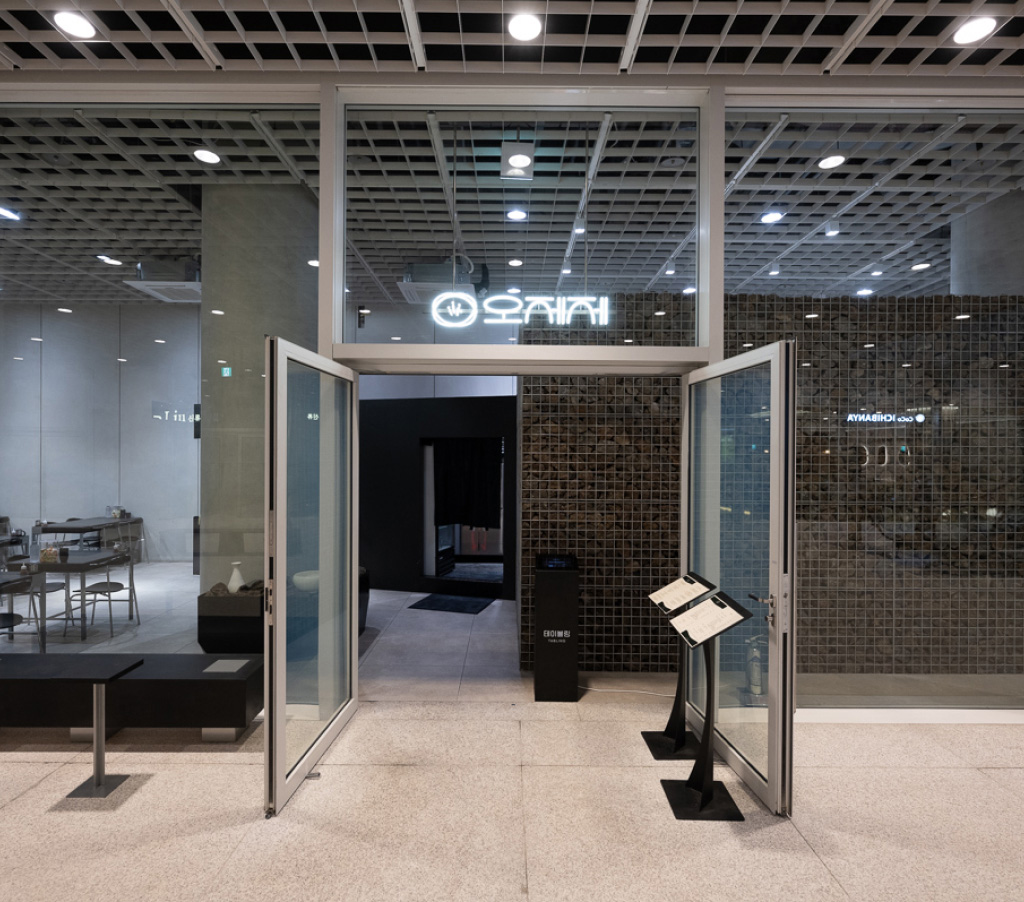

Meet Jeong Jae-beom, owner of Yongsan-based Namyeongdon, one of Seoul's top 3 meat restaurants


▲ Namyeongdon owner Jeong Jae-beom at Namyeongdon in Yongsan, Seoul ⓒgoldenimageshouse
Later, when my father passed away in 2001, my mother took over the restaurant as sole operator. It was very difficult for my mother to run the restaurant alone, which used to be run chiefly by my father. At that time, I was running a civil engineering business, but it just also happened to be a time when the business wasn’t doing well. My mother asked me if I wanted to take over the restaurant. Consequently, I entered the restaurant business thinking that I should return to civil engineering work after stabilizing sales at the restaurant.

▲ “Pretty Pig,” which Namyeongdon owner Jeong Jae-beom ran together with his mother after his father’s passing.
Was there any specific cause for it?
It was not that it became a restaurant that people lined up to get in right after its opening. People who had been to it kept coming back saying that the food was delicious, but we hadn’t been able to achieve remarkable sales growth. We had difficulty attracting new customers because the district had not been commercially developed. At that time, Amorepacific employees came to the restaurant often, and I still remember it because their frequent visits, always in a group, gave me great strength.
Hip-hop musician Choiza visited the restaurant at a time when I was getting deeply concerned about how to spread word of the restaurant. We didn't know each other at all. Later, I found out that he had visited the restaurant on a recommendation by another musician. Choiza posted a review of the restaurant on his Instagram account, and people started lining up in front of it the very next day. Since word of mouth spread like that, our sales have never dipped. The area's commercial economy has largely been revived as well. To me, Mr. Choiza is no less than a noble savior.

▲ Namyeongdon, a new venture that started its life on the same site as its predecessors.
Isn't pork belly or neck generally most popular among the public?

▲ Namyeongdon's signature menu items, pork cheek meat and jowl meat.

▲ Charcoal, which determines the taste of meat.
What do you think sets it apart from other restaurants?
Also, I didn’t know this prior to running a restaurant, but I now know that I'm actually very picky. Because pork cheek or jowl meat has a lot of fat, even storing it for a little longer than normal makes it gamey, and I threw away any meat that was even just a little bit gamey. In fact, I could have let it slip, saying to myself, ‘This extent of gaminess is still alright.’ However, I felt ashamed of even the idea of serving such meat. In the case of kimchi stew, I boil it for about 5 to 6 hours every day, but if you boil it wrong, it can stick to the pot and cause it to burn. When that happens, I throw all of it away. It's food lost, but I believe if I started to compromise on such things little by little, the business wouldn’t be viable in the long run. My philosophy is “Let's do business without embarrassing myself.”

▲ Side dishes served at Namyeongdon, all homemade by owner Jeong Jae-beom.
How did you develop your mul-jjolmyeon, which is as famous as your meat dishes?

▲ Mul-jjolmyeon, a popular side menu item at Namyeongdon
Do you have any meat grilling tips to share?
What are your reasons for continuing to expand your business?

▲ Employees of Namyeongtak, which is run by Namyeongdon owner Jeong Jae-beom and chef Oh Jun-tak / Employees of Namyeongdon.

▲ Owner Jeong Jae-beom’ wife, who is in charge of the kitchen at Namyeongdon.
10 years from now, I plan to hand over the restaurant to my son and move to the suburbs with my wife. I want to build a guest room in my house like a restaurant and invite friends over. I'm picturing a future where I serve seasonal food every week and eat it together with my friends there.

▲ Namyeongdon owner Jeong Jae-beom at Namyeongdon in Yongsan, Seoul ⓒgoldenimageshouse
Photos Goldenimageshouse
Planning Communications team, Amorepacific
All interviews and manuscripts are copyrighted by News Square.
-
Like
1 -
Recommend
0 -
Thumbs up
1 -
Supporting
0 -
Want follow-up article
0
Array ( )






